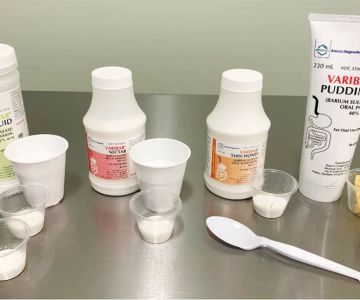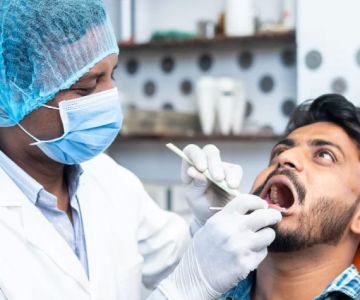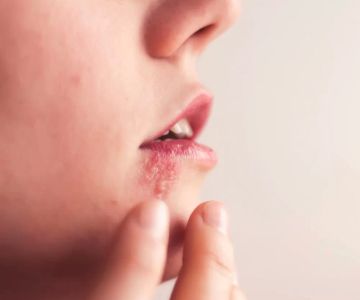How to Check Yourself for Oral Cancer
Oral cancer is a serious health condition that affects thousands of people each year. Early detection is crucial for successful treatment, and one of the best ways to catch it early is by regularly checking yourself for any signs or symptoms of oral cancer. In this article, we'll guide you through the steps to perform a self-examination for oral cancer, and explain what to look for, how to identify potential warning signs, and why it’s important to stay vigilant about your oral health.
1. Why Self-Exams Are Important
Oral cancer can develop in various parts of the mouth, including the lips, tongue, gums, cheeks, and the roof or floor of the mouth. While professional dental exams are essential, regular self-exams between visits to the dentist can help detect early signs of oral cancer. The earlier you catch it, the higher the chances of successful treatment and recovery. Early-stage oral cancer often has subtle symptoms, which is why self-exams are an important tool in identifying the disease in its early stages.
According to the American Cancer Society, around 54,540 people in the U.S. are diagnosed with oral cancer every year. Tragically, many of these cases are diagnosed at later stages when treatment is less effective. By performing regular self-exams, you can take a proactive approach in managing your health and increasing your chances of early detection.
2. How to Perform an Oral Cancer Self-Examination
Performing a self-exam for oral cancer is relatively simple and only takes a few minutes. Here’s how to do it:
Step 1: Prepare for the Exam
Before starting the self-exam, make sure you are in a well-lit area, ideally near a mirror, so you can clearly see your mouth. You’ll need a clean hand, a tissue or a clean cloth, and a flashlight if necessary. It may also be helpful to have a dental mirror, but it’s not essential for a basic exam.
Step 2: Examine Your Lips
Start by examining the outside of your lips for any unusual lumps, bumps, or changes in color. Gently pull down your lower lip and look for any sores or sores that won’t heal. Pay attention to the inner surface of the lips as well, as oral cancer can develop there too.
Step 3: Inspect Your Mouth and Cheeks
Next, open your mouth and inspect the inside of your cheeks. Gently use your fingers to press along the inside of each cheek while checking for any hard or painful spots. Run your fingers over the roof and floor of your mouth, and feel for any unusual growths or lumps.
Step 4: Check Your Gums
Look at your gums for any signs of inflammation, discoloration, or unusual changes in texture. Check along the gum line and behind your teeth. Use your fingers to feel for any lumps, particularly along the back of the gums and inside the mouth.
Step 5: Examine Your Tongue
Stick out your tongue and carefully examine its top and underside. Look for any sores, lumps, or white patches. Don’t forget to check the sides of your tongue as well. Gently press your fingers on both sides of your tongue to feel for any abnormalities. If your tongue is swollen or has unexplained white patches, this could be a sign of oral cancer.
Step 6: Feel Your Neck and Jaw
Finally, use your fingers to gently palpate your neck and jaw. Feel for any lumps or swelling under the skin, particularly near the lymph nodes. Any persistent swelling or lumps should be evaluated by a healthcare professional.
3. When to See a Dentist or Doctor
If you notice any of the following symptoms during your self-examination, it’s important to see a dentist or doctor as soon as possible:
- Persistent mouth sores that don’t heal after two weeks.
- White or red patches inside the mouth or on the tongue.
- Unexplained bleeding in the mouth or gums.
- Lumps or swelling in the neck, jaw, or mouth area.
- Unexplained pain or discomfort when chewing, swallowing, or speaking.
Even if you don’t notice any of these symptoms, regular checkups with your dentist are still vital, as they are trained to spot the early signs of oral cancer and other health issues. If you notice any changes or discomfort that persist, don’t hesitate to reach out to a healthcare professional for an evaluation.
4. Oral Cancer Prevention Tips
While self-exams are important, it’s also essential to take proactive steps to reduce your risk of developing oral cancer. Here are some prevention tips to follow:
- Avoid Tobacco Products: Smoking and chewing tobacco are major risk factors for oral cancer. Quitting these habits can significantly lower your risk.
- Limit Alcohol Consumption: Excessive alcohol use can increase your chances of developing oral cancer, especially when combined with smoking.
- Protect Your Lips from the Sun: Use lip balm with SPF protection to prevent lip cancer caused by prolonged sun exposure.
- Maintain Good Oral Hygiene: Regular brushing and flossing can help maintain oral health and reduce the risk of gum disease, which can increase the risk of oral cancer.
- Get Regular Dental Checkups: Regular visits to the dentist for professional cleanings and exams are crucial for early detection of oral health issues.
5. Final Thoughts
Oral cancer is a serious condition, but early detection through self-exams can make a significant difference in treatment outcomes. By performing regular self-examinations and maintaining a healthy lifestyle, you can stay on top of your oral health and catch any potential issues early on.
If you have concerns or need guidance on how to conduct a thorough oral cancer exam, consult with your dentist or healthcare provider. Regular checkups and professional exams are essential, but taking proactive steps in monitoring your own oral health is equally important. For more information about maintaining good oral health or finding dental care resources, visit Dentistry Toothtruth for expert advice and services.







 Growing Smiles of Voorhees4.0 (2464 review)
Growing Smiles of Voorhees4.0 (2464 review) Affordable Dentures & Implants4.0 (855 review)
Affordable Dentures & Implants4.0 (855 review) Coventry Family Dental4.0 (247 review)
Coventry Family Dental4.0 (247 review) Hiser Orthodontics5.0 (283 review)
Hiser Orthodontics5.0 (283 review) Sapphire Family Dental (Dr. Amy Chi, Dr. Emily Allen & Dr. Steven Rzepecki)4.0 (208 review)
Sapphire Family Dental (Dr. Amy Chi, Dr. Emily Allen & Dr. Steven Rzepecki)4.0 (208 review) New York Total Dental5.0 (85 review)
New York Total Dental5.0 (85 review) The Importance of Oral Health Education During Pregnancy for a Healthy Pregnancy
The Importance of Oral Health Education During Pregnancy for a Healthy Pregnancy Best Tips for Brushing Your Teeth Properly for Healthy Gums: Essential Techniques for Oral Health
Best Tips for Brushing Your Teeth Properly for Healthy Gums: Essential Techniques for Oral Health Why Skipping Dental Checkups Can Lead to Bigger Oral Health Problems
Why Skipping Dental Checkups Can Lead to Bigger Oral Health Problems Advantages of Porcelain Dental Restorations
Advantages of Porcelain Dental Restorations How Can Diabetes Cause Tooth and Gum Problems? Preventing and Managing Oral Health Issues
How Can Diabetes Cause Tooth and Gum Problems? Preventing and Managing Oral Health Issues Healthy Habits for Promoting Good Oral Health and Hygiene: Tips for a Healthy Smile
Healthy Habits for Promoting Good Oral Health and Hygiene: Tips for a Healthy Smile